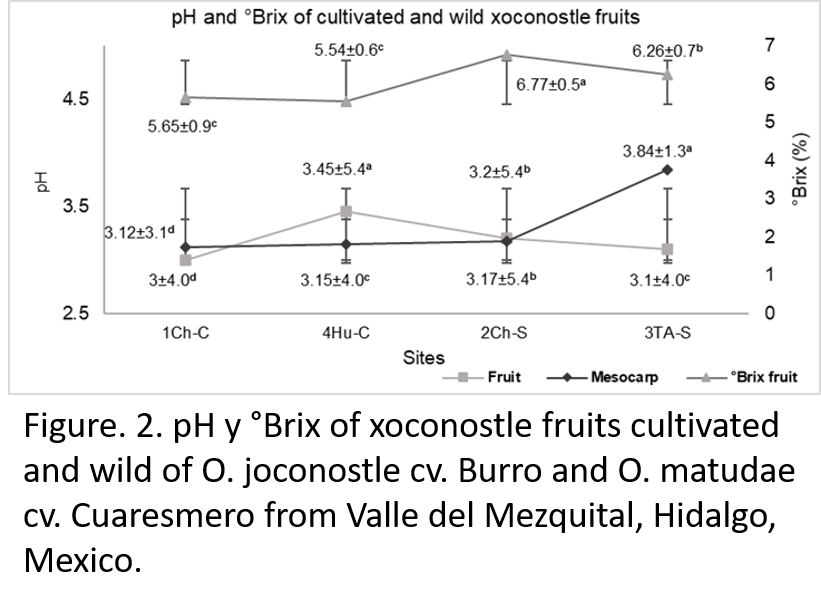Physical-chemical quality of xoconostle fruits (Opuntia matudae and O. joconostle) in the Valle del Mezquital, Hidalgo, Mexico
DOI:
https://doi.org/10.56890/jpacd.v24i.505Keywords:
Soil quality, nutritional content, Xoconostle Burro, Xoconostre CuaresmeroAbstract
The physical and chemical parameters of the soils are decisive in the physiological development of plants of agricultural interest. In the case of some species of Opuntia called xoconostle, the impact of the physical and chemical quality of the fruits, on the soils where they are grown, is unknown. The objective of this study was to determine the physical-chemical quality of two xoconostles fruits (Opuntia matudae cv. Cuaresmero and O. joconostle cv. Burro) cultivated and wild in the Valle del Mezquital, Hidalgo, Mexico. The physical and chemical characteristics of soils and fruits of xoconostle O. matudae and O. joconostle cultivated and wild in the state of Hidalgo, Mexico were analyzed with five repetitions. The data were treated with the JMP V8 program, expressed as mean ± standard deviation. The differences among the means of the fruits were treated with analysis of variance (ANOVA) with a significance level of P?0.001. The differences among the means were evaluated with the Tukey test with a significance level of (P?0.05). Among the physical and chemical properties of the soils, they presented a pale brown (10YR 6/3), with higher porosity, more acidic pH, and exchangeable ions, where wild xoconostle plants (O. joconostle cv. Burro) grow and develop, the fruits presented increases in the quality parameters in weight of whole fruit and pulp, longitudinal and equatorial diameter, °Brix, pH, ash, fiber, protein, K+, Na+, Ca2+ y Mg2+ .The xoconostle fruits of wild plants of Chapantongo O. joconostle showed statistically significant differences between sites and quality parameters concerning to O. matudae cv. Cuaresmero. Xoconostle fruits can be considered in the diet as a nutraceutical food alternative. It can also be used as a natural ingredient in food, food products, and by-products.
Publication Facts
Reviewer profiles N/A
Author statements
Indexed in
- Academic society
- Journal of the Professional Association for Cactus Development
- Publisher
- Professional Association for Cactus Development




